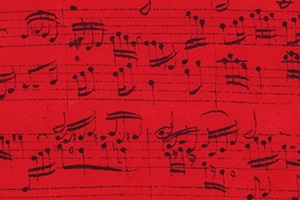Choir
The valiha as unifying element in the stylistic diversity of Madagascar music

Valiha Madagascar
Due to its geographical location, Madagascar displays diverse musical traditions laid down at different times by waves of settlers from Southeast Asia, Africa, Arabia, Europe, and America. Isolated in several terrestrial ecosystems of the island, these cultures both developed independently and sometimes mixed, complementing each other and giving rise to a unique stylistic variety of Madagascar music.
In the highlands, inhabited mainly by the Austronesian ethnic group, one can highlight the influence of European church music, while the local manner of singing in large choirs resembles the Hawaiian or other Polynesian vocal traditions. The southern and western coastal areas inhabited by peoples originating from mainland Africa show a repertoire characterized by more elaborate ornamentation performed by small groups of vocalists which is very similar to polyphonic chants of southern Africa.
Madagascar ethnic musical instruments mainly demonstrate African influence but, unlike percussion dominating in the music of the mainland, the most common instruments on the island are of the string variety, among which the valiha plays a distinctive role in all Malagasy music regardless of stylistic preferences of any ensemble. This 10- to a 20-string instrument, originating from Indonesia, was initially played to invoke the ancestors and was subsequently adopted by many ethnic groups.

The valiha comes in bamboo or wood forms, varying its shapes from tubular to rectangular, with some musicians using resonators to amplify the quiet sound. Either played as a lead instrument or used as a drone-tone, the valiha runs the gamut from trance music and virtuoso playing to accompaniment and choral singing.
To experience the authenticity of Malagasy music, it is better to listen to the very first recordings made during the 1920s and 1930s when such an original and complex culture of the island has not yet changed under the powerful influence of the music industry of the 20th century.
Listen to Ny fifaliana ry lahy tsy feno raha tsy eo anita-nareo by Mplilalao De Fenoarivo:
Fortunately, several labels have released their compilation of early recordings of Malagasy music in recent decades. All these issues are based on the same recording of four dozens of songs made in Madagascar from 1929 to 1931 and differ only in the depth of digital processing designed to remove clicks and other artefacts from the 78rpm disk.



